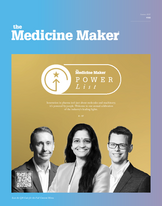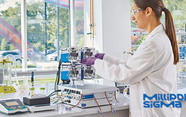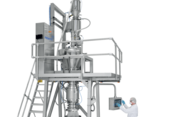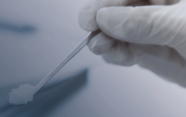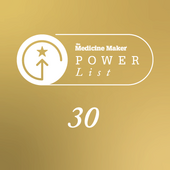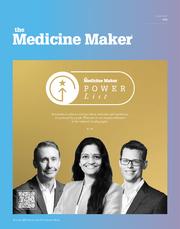Your Guide to Equipment Orchestration in the Lab
You’ve got the lab, the tools, and the equipment; now, you need integration and orchestration for a seamless workflow.
Malka Hoffmann | | 4 min read | Practical

Credit: Eitan Riklis - Selection only.
To better understand the concept of equipment orchestration, imagine a conductor in an orchestra coordinating musical instruments to create a beautiful symphony. Similarly, equipment orchestration involves setting up lab instruments to perform tasks in an ordered, organized fashion. A well-orchestrated lab has equipment operating as a unified system, streamlining operations and improving efficiency.
For lab managers and researchers who like the sound of a well-orchestrated lab, here is my step-by-step guide to the equipment orchestration process, including key priorities and considerations.
Stage one: planning
A meticulous and well-detailed plan for equipment orchestration is essential for optimal results. To ensure success, it’s crucial to clearly define your integration goals, prioritize key objectives, and identify potential challenges and bottlenecks in advance. My advice:
- Understand the workflow and identify the key processes and experiments regularly performed in your lab. This will provide clear visibility into what is required for effective orchestration.
- Take stock and conduct an inventory of all the equipment used in each process. Understand each instrument’s role and frequency of use to optimize integration.
- Define objectives and clearly outline the goals you aim to achieve through equipment orchestration. These objectives, such as reducing turnaround times, increasing efficiency, or improving data accuracy, will guide your strategy and choice of technologies, while focusing on measurable outcomes.
Stage two: mapping
With a clear understanding of your objectives and your lab’s key equipment and processes, the next step is to map out the details of instrument compatibility and lab workflows:
- Assess equipment compatibility and the technical specification and connectivity options for each piece of equipment on your list. Determine which instruments support automation and identify those that may require manual intervention or upgrades to integrate effectively.
- Connect the dots. Lab Equipment orchestration goes beyond simply linking devices. It’s about understanding how instruments can work together seamlessly throughout the lab’s entire workflow. Consider how each piece of equipment contributes to the process and identify where it fits best in the overall system.
- Create a detailed visual diagram of your equipment and workflows. This “big picture” will help you identify potential bottlenecks, troubleshoot device miscommunications, and refine your orchestration strategy for maximum efficiency.
Stage three: data management
Accurate data output is the cornerstone of any lab’s success, which means that seamless data capture and integration is crucial in equipment orchestration. Without effective data management, even the best orchestration efforts are rendered meaningless. To ensure smooth and effective data management, your lab software should include automated data capture for accurate and real-time inputs; device interoperability for smooth communication between instruments; centralized data systems for easy access and collaboration; and regulatory compliance to meet strict standards and guidelines.
Lab data management optimization requires the identification and collection of data formats to understand the types and structures of data collected by each instrument. The establishment of a standardized data collection protocol makes it easier for all team members to follow, and consistent data formatting enhances accuracy and simplifies analysis. You must also also consider data storage and security, especially through the implementation of encrypted storage solutions and the scheduling of regular backups to safeguard your data. A secure, scalable storage strategy ensures the longevity and accessibility of valuable lab information.
Stage four: choosing the right software
The vast array of lab orchestration software options can be overwhelming. To find the best fit for your lab, prioritize compatibility (with a wide range of lab instruments), user-friendliness (with an intuitive interface), robust integration options (with other software and data formats), customization (to adapt to unique workflows), and responsive support (for timely troubleshooting and assistance).
Choosing the right software is the make or break for seamless orchestration and achieving long-term success. This is a step that shouldn’t be rushed.
Stage five: integrating AI
AI and digital transformation offer a new frontier for equipment orchestration in the lab. AI-powered tools can optimize workflows by analyzing data patterns, predicting maintenance needs, and enabling real-time decision-making.
Advanced digital technologies, such as IoT (Internet of Things) devices and machine learning algorithms, can enhance instrument connectivity, automate routine tasks, and improve overall system intelligence. By embracing digital transformation, labs can shift from reactive to predictive operations, ensuring smoother integration, greater efficiency, and highly reproducible results.
Equipment orchestration has the power to improve efficiency and boost productivity. Done right, it reduces human intervention, enhances reproducibility, and delivers more accurate results. By automating tedious tasks, researchers can focus on the creative and innovative aspects of their work. The journey to seamless orchestration isn’t without challenges, but following the steps outlined here provides a strategic and methodical approach. With the right tools, processes, and mindset, your lab can operate at its fullest potential, enabling groundbreaking discoveries and advancing science. Music to everyone’s ears.
Automation Specialist, Labguru (Biotech Ltd)
Malka holds a BSc. in Biotechnology Engineering and brings over six years of experience as a researcher in biotech companies. As an Automation Specialist at Labguru, Malka focuses on creating tailored automation solutions for laboratories, addressing their specific needs and requirements. Using Labguru’s advanced automation tool, the Workflow Editor, she develops processes that make data analysis faster, easier, and more accurate, while also streamlining routine tasks within the system to enable labs to operate more efficiently. Malka’s work is dedicated to helping scientists focus on their core research objectives by saving time on repetitive tasks and improving data reliability and operational efficiency.







